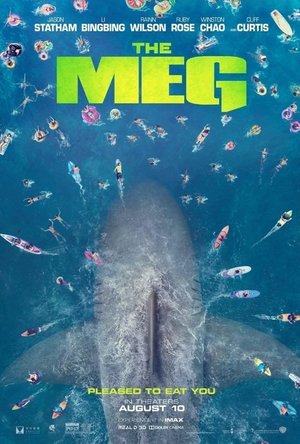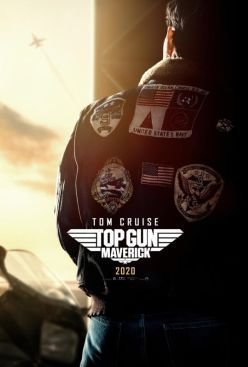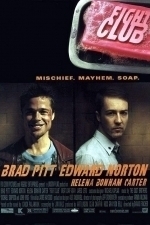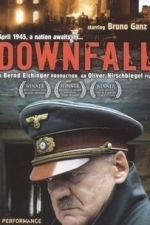
Collins-Robert Concise French Dictionary
Reference and Education
App
57,000 headwords and more than 190,000 translations • more than 90,000 phrases • full...

GSVExplorer
Navigation and Travel
App
Search and view Google street view from a visible map region Features - Tap on map view to search...

HelloTalk Language Exchange
Education and Social Networking
App
HelloTalk, the 1st global language and culture exchange community, connects you with native speakers...
Bob Mann (459 KP) rated The Meg (2018) in Movies
Sep 28, 2021
Jason Statham – the unthinking man’s Dwayne Johnson – plays our hero Jonas Taylor. (Jonas? Surely some sly joke?). Jonas is drinking his life away in Thailand after being traumatised by an underwater rescue mission in which he was 90% successful. (Yeah, I know. Bloody perfectionists. Hate ’em). But he is needed again, since his cute ex-wife Lori (Jessica McNamee) is stuck at the bottom of the sea being terrorised by a terrifying creature: no, not Spongebob Square Pants… the titular prehistoric shark.
Lori is working at an undersea research station – Mana One – off the coast of China, funded by the annoyingly brash billionaire Morris (Rainn Wilson, from “The Office”), who you just HOPE HOPE HOPE will get munched at some point!
Running the station (in the most shameless Hollywood/Chinese market crossover since “The Great Wall“) is Zhang (Winston Chao) assisted by his cute daughter Suyin (played by the gloriously named and very talented Bingbing Li) and his even cuter granddaughter Meiying (Sophia Cai). The race is on to use their brains and Taylor’s brawn to stop the monster from reaching the seaside resort of Sanya Bay for lunch.
The action is, of course, absurd with so many near misses for Jonas from gnashing teeth that he could be The Meg’s registered dentist. There is a really nice dynamic though built up between Jonas, his potential cross-cultural love interest Suyin and young Meiying. Suyin is a classic TimesUp heroine for 2018, with an assertive f***-you attitude and not remotely giving an inch to Statham’s hero.
But it’s young Sophia as Meying who really steals lines and steals hearts with a truly charming performance, and would get my ‘man of the match’ were it not for…
…research assistant Jaxx (Australian model, Ruby Rose). She has an absolutely extraordinary look in this film. Chiselled and tattooed, she literally looks like she has stepped out of a Final Fantasy video game… and acts well too: the complete package.
As referenced above, the Hollywood/Chinese crossover is quite striking in this film, with the Chinese beach location looking like Amity Island on crack! (Cue the overweight Chinese kid as the Jaws “Alex” replacement… who knew China had a child obesity issue too… and that they also have ‘Zoom’ ice lollies!) Unusually for a mainstream Western film, a significant number of lines in the film are in Chinese with English subtitles.
In the league table of shark movies, it is far nearer to “Deep Blue Sea” than it is to “Jaws”, the reigning league champion, and all are far in excess of the ridiculous “Sharknado”. But compared to “Deep Blue Sea”, and even compared to “Jaws” – now, astonishingly, 43 years old! – it’s a curiously bloodless concoction, presumably to guarantee it’s 12A certificate. I have seen far bloodier and more violent 12A’s, and if anything I think director Jon Turteltaub (“National Treasure”) rather overdid the sanitisation.
It’s not going to win many gongs at the Oscars, but it is a slice of movie fun nonetheless.
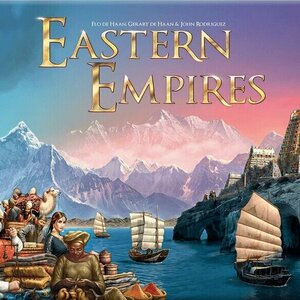
Eastern Empires
Tabletop Game
Eastern Empires is a board game for 3 to 9 players and covers the development of ancient...
Gareth von Kallenbach (980 KP) rated Top Gun: Maverick (2022) in Movies
May 19, 2022
Now after decades away and delays due to the pandemic, Cruise has returned to the franchise with “Top Gun: Maverick” and has crafted the rare feat, of a sequel that is not only better than the original but also gives audiences an edge of the seat summer event film when it is needed the most.
Cruise stars as Captain Pete Mitchell who after thirty years is not only haunted by his past but unable to shed his insubordinate and impulsive ways which have kept him from reaching the rank of Admiral and have moved him from one assignment to another.
After his latest action confirms his incredible aviation skills but infuriates the upper brass in the process, Mitchell is out of options as he is unwilling to retire, unable to be promoted, and out of posting options. He is tasked by an old friend with enough clout to watch out for him to return to the Top Gun program as an instructor. Mitchell is hesitant as his last attempt as an instructor did not last long and he believes he is better suited to fly versus teaching.
It is learned that an enemy faction is about to open a Uranium enrichment facility in violation of established law that would threaten the region, and Mitchell is tasked with training a team of Top Gun graduates in three weeks who can make what appears to be a near-impossible assault on the facility to destroy it before it becomes a threat.
While the assembled pilots represent a brash and talented group, Mitchell must contend with the ghosts of his past as one of the members Bradley ‘Rooster’ Bradshaw (Miles Teller), is the son of his deceased friend Goose and has a very fractured relationship with Bradshaw over their shared past.
With pressure on him from Admiral Simpson (Jon Hamm), Mitchell must somehow find a way to train the group in a small amount of time for what is considered by many to be an impossible mission due to the terrain, defenses, and location of their target.
The film is an edge-of-the-seat adrenaline rush that grabs ahold of you from the start and never lets up. From the opening music to the intense aerial sequences, the audience was hooked as gasps and cheers erupted frequently as the characters and action clearly connected with the audience.
While the visual sequences are nothing short of spectacular, the film is a character-based story and there is a depth to Mitchell and many of the cast that goes much deeper than one would normally see in a summer action film.
Jennifer Connelly offers a great counter-point to Mitchell as a person from his past that has known him through several key moments of his career and helps him endure the turbulent emotions that he has.
From the solid characters and story to the rousing final segments of the movie, “Top Gun: Maverick” returns the Summer Event film in grand style and exceeded my expectations and the original in every way.
DaveySmithy (107 KP) rated Fight Club (1999) in Movies
Dec 3, 2024
The story is told through the eyes of the unnamed narrator (Norton), a white-collar worker trapped in a monotonous life. Crippled by insomnia and a desperate longing for purpose, his mundane existence takes a dramatic turn when he crosses paths with Tyler Durden (Pitt), a magnetic, anarchic soap maker. Together, they form the titular fight club—a raw, underground outlet for men to vent their frustrations by literally beating them out of each other. What begins as an unconventional form of therapy soon spirals into a chaotic and dangerous movement, leading the narrator down a path of self-destruction and shocking revelations.
Edward Norton delivers a career-best performance as the narrator, capturing the character’s descent into madness with unnerving precision. His dry wit and self-deprecating humor make him relatable, even as his actions become increasingly unhinged. But it’s Brad Pitt who truly steals the show as Tyler Durden. Charismatic, unpredictable, and dripping with swagger, Pitt embodies the fantasy of rebellion and freedom that so many viewers secretly crave. Together, the two actors create a mesmerizing dynamic, with Tyler representing everything the narrator wants to be—and fears he might become.
Helena Bonham Carter rounds out the core cast as Marla Singer, a nihilistic wildcard who both disrupts and grounds the narrator’s chaotic journey. Her chemistry with Norton is as compelling as it is unconventional, adding a layer of emotional complexity to an otherwise hyper-masculine narrative.
What sets Fight Club apart is its fearless critique of modern society. It skewers consumerism, masculinity, and the emptiness of the so-called “American Dream,” forcing viewers to confront uncomfortable truths about their own lives. Fincher’s direction is sharp and unrelenting, with the film’s gritty visual style perfectly complementing its nihilistic tone. The innovative use of CGI, fourth-wall-breaking moments, and hauntingly effective cinematography by Jeff Cronenweth keep the audience on edge, unsure of what to expect next.
Yet, Fight Club is not without flaws. Its provocative themes can feel overly blunt at times, and some viewers might find its violent and anarchistic undertones alienating. Additionally, while the infamous plot twist is masterfully executed, it risks overshadowing the film’s deeper messages upon rewatch.
The soundtrack, anchored by The Dust Brothers’ industrial score and the unforgettable use of The Pixies’ “Where Is My Mind?” in the climax, elevates the film to iconic status. These elements, combined with razor-sharp dialogue and endlessly quotable lines, solidify Fight Club as a masterpiece of late-90s cinema.
While it may not be for everyone, Fight Club is a bold, daring, and unforgettable experience that challenges societal norms and forces introspection. It’s an audacious 9/10 film—flawed but brilliant, much like the chaos it portrays.
A spectacle of celebrity, talent and burning ambition, Queen Bees combines the biographical stories of six ambitious women who helped to shape the standards of British society between the two world wars. Londoner Siân Evans is a cultural historian who has previously worked with the Victoria and Albert Museum, National Trust and Design Museum, and takes great lengths to thoroughly research into her written subject in order to portray a highly accurate insight to the lives of historical figures. Due to the non-existent political status of women in the early 1900s, the women featured in this book are virtually unknown today, yet they had a great impact during the 20s and 30s and helped to shape the Britain of today.
Although not necessarily born into it, circumstances such as marriage meant these six women were regarded as upper class. In no particular order, the names impacting on the social revolution and thus featured in Queen Bees are as follows: Lady Nancy Astor, the first female MP; Lady Sybil Colefax, who became a friend of Edward VIII; Lady Emerald Cunard, also connected with the royal family; Mrs. Ronnie Greville, a rather formidable woman; Lady Edith Londonderry, the founder of the Women’s Legion; and Laura Corrigan, the youngest of the set. Evans talks the reader through these women’s careers as professional hostesses as they compete to throw the better party, entertaining famous writers and actors as well as members of royalty, both national and foreign.
What is perhaps the most interesting, and indeed the most worth learning, is the way a couple of these women altered the future of the British monarchy. Without their interference the future George VI would never have married Elizabeth Bowes-Lyon, and without their involvement in the relationship between Edward VIII and Wallis Simpson, George VI would never have come to the throne. This is such an important aspect of British history that has been widely left out and ignored. Without these hostesses influence we would all be experiencing a slightly different life.
In terms of the actual writing, Siân Evans manages fairly well to engage the reader as she relates the factual story in a more or less chronological way. A slight issue is the quick, often undetected, move from one woman to the next, resulting in a lot of confusion about who is who particularly at the beginning of the book. A lot of the narrative features other key figures from the same period and often moves away from the main characters, which, whilst interesting, is not what the reader necessarily expected from a book whose title Queen Bees suggested it was only going to be about the women’s lives.
Footnotes, quotes and extracts from letters and diaries help to make the book appear reliable, factual and believable. Some of the content, without back up, would have seemed rather fanciful or exaggerated. Queen Bees can be read as a source of entertainment or as a citation for historical research. What is found within these pages is a more unbiased account of the early twentieth century than would be found in numerous male dominated history textbooks.
Mature readers of all ages are likely to gain something from reading Queen Bees – pleasure, knowledge etc., however it is most likely to appeal to the contemporary feminist. With this in mind, be aware that the six hostesses were not feminists of their time; they were not involved in Suffragette movements and were fairly content to live off money earned by their husbands or fathers. Yet, on the other hand, they impacted on the future of Britain as much as the male politicians of the time. Highly political in content, Queen Bees is worth reading to discover our own history, but be prepared for initial confusion over who is who and rather lengthy paragraphs.
RəX Regent (349 KP) rated Downfall (Der Untergang) (2004) in Movies
Feb 19, 2019
Told in a straight forward manner, we are given a portrait of not only Adolf Hitler himself, played perfectly by Bruno Ganz, who manages to humanize him without ever apologising for his heinous acts, but also those close to him. Shown through the young eyes of his final secretary, Traudl Junge (Alexandra Maria Lara), we are given a picture of what The Third Reich was to those who believed in it as well as what it had become for those who would suffer at it bloody hands.
Directed by Hirschbiegel to put us, the audience in the anterooms with these monsters, we are placed into a complex environment, edgy, atmospheric and most of all, real, as we witness noble acts of patriotism, conscience and pure, despicable horror, none less so that Magda Geobells, with the full consent of her husband, Joseph, first drugging, then murdering their six children as they slept, rather than “let them live in a world without national socialism.”
The only redeeming factors were their eventual suicides and in terms of the film, their first rate performances throughout this harrowing scene. Corinna Harfouch, who portrays Magda manages to portray this evil woman yet convey the emotion which was subdued deep beneath the surface. No small feat to allow such a fleeting glimpse of humanity during such and inhuman act.
But the same must be said Bruno Ganz, who manages to portray Hitler with such humanity; whilst showing us the true nature of his monstrosities, highlighting that the REAL monsters live among us and can seduce us at any time, any where, especially when we are vulnerable.
During one of the film’s early scenes, Hitler and Albert Speer (Heino Ferch), his Armaments Minister, discussing his vision for The Third Reich as he looks over a model of the new Germany which would be built after he won the war, a Germany without department stores, instead focusing on art, literature and culture.
Surely a noble goal, but as we all know, this cultural hub would have been built at an unacceptable cost, mainly with the blood of those who Hitler and his cohorts deemed to be inferior.
This is one of many clever methods used to convey a fair portrait of Hitler and The Third Reich. To demonstrate how bad they were, you first have to show impartiality, pointing out the good in what they do, play devil’s advocate as it were. Because whether we like it or not, evil motives are often built upon decent goals.
But as this film demonstrates, as Hitler shows his destine for anyone, even his own people, who will not give their lives for HIS vision of Germany, his Third Reich was being eaten away by a cancer of his own making, a Germany rotting from the very top.
Downfall is without a doubt one of the best World War 2 films which I have ever seen, delivering a compelling and immersive look behind the scenes of one of the most important defeats in modern history.
But being British and having to follow this with subtitles, which was great as watching this in its native German only adds to the experience, it can be a bit difficult to keep up with every plot machination, as we spend two and half hours reading about troop deployments, tactics and the philosophy of the Third Reich as we are presented with such atmospheric work, but if you can keep up with but the text and visuals, this is one hell of an education for those who do not know and an immersive masterpiece for those who follow WW2 history.
A spectacle of celebrity, talent and burning ambition, <i>Queen Bees</i> combines the biographical stories of six ambitious women who helped to shape the standards of British society between the two world wars. Londoner Siân Evans is a cultural historian who has previously worked with the <i>Victoria and Albert Museum, National Trust </i>and <i>Design Museum</i>, and takes great lengths to thoroughly research into her written subject in order to portray a highly accurate insight to the lives of historical figures. Due to the non-existent political status of women in the early 1900s, the women featured in this book are virtually unknown today, yet they had a great impact during the 20s and 30s and helped to shape the Britain of today.
Although not necessarily born into it, circumstances such as marriage meant these six women were regarded as upper class. In no particular order, the names impacting on the social revolution and thus featured in <i>Queen Bees</i> are as follows: Lady Nancy Astor, the first female MP; Lady Sybil Colefax, who became a friend of Edward VIII; Lady Emerald Cunard, also connected with the royal family; Mrs. Ronnie Greville, a rather formidable woman; Lady Edith Londonderry, the founder of the Women’s Legion; and Laura Corrigan, the youngest of the set. Evans talks the reader through these women’s careers as professional hostesses as they compete to throw the better party, entertaining famous writers and actors as well as members of royalty, both national and foreign.
What is perhaps the most interesting, and indeed the most worth learning, is the way a couple of these women altered the future of the British monarchy. Without their interference the future George VI would never have married Elizabeth Bowes-Lyon, and without their involvement in the relationship between Edward VIII and Wallis Simpson, George VI would never have come to the throne. This is such an important aspect of British history that has been widely left out and ignored. Without these hostesses influence we would all be experiencing a slightly different life.
In terms of the actual writing, Siân Evans manages fairly well to engage the reader as she relates the factual story in a more or less chronological way. A slight issue is the quick, often undetected, move from one woman to the next, resulting in a lot of confusion about who is who particularly at the beginning of the book. A lot of the narrative features other key figures from the same period and often moves away from the main characters, which, whilst interesting, is not what the reader necessarily expected from a book whose title <i>Queen Bees</i> suggested it was only going to be about the women’s lives.
Footnotes, quotes and extracts from letters and diaries help to make the book appear reliable, factual and believable. Some of the content, without back up, would have seemed rather fanciful or exaggerated. <i>Queen Bees</i> can be read as a source of entertainment or as a citation for historical research. What is found within these pages is a more unbiased account of the early twentieth century than would be found in numerous male dominated history textbooks.
Mature readers of all ages are likely to gain something from reading <i>Queen Bees</i> – pleasure, knowledge etc., however it is most likely to appeal to the contemporary feminist. With this in mind, be aware that the six hostesses were not feminists of their time; they were not involved in Suffragette movements and were fairly content to live off money earned by their husbands or fathers. Yet, on the other hand, they impacted on the future of Britain as much as the male politicians of the time. Highly political in content, <i>Queen Bees </i>is worth reading to discover our own history, but be prepared for initial confusion over who is who and rather lengthy paragraphs.
